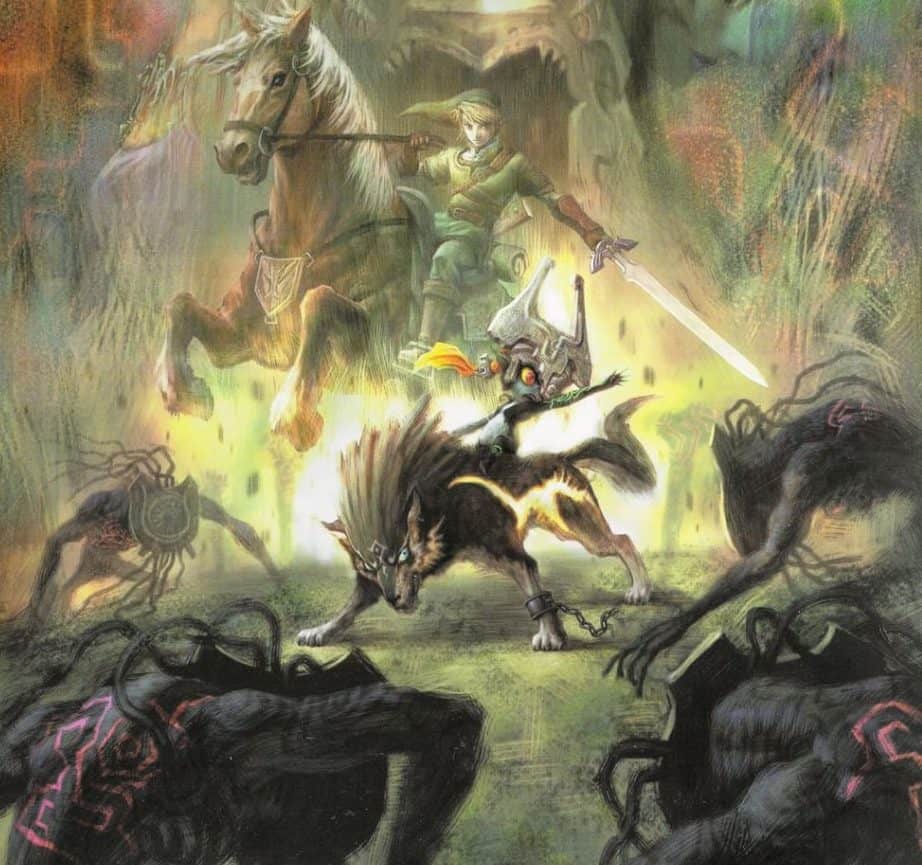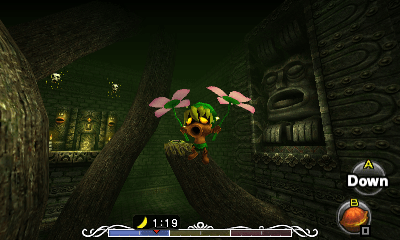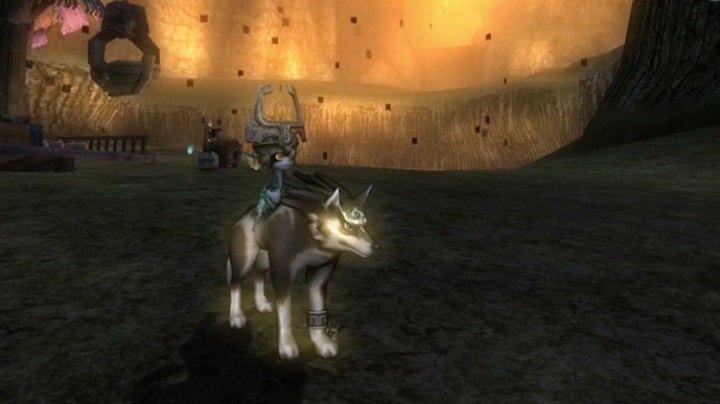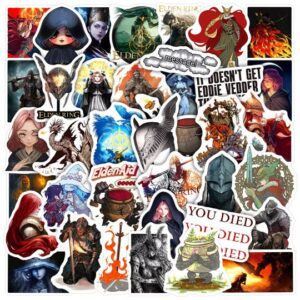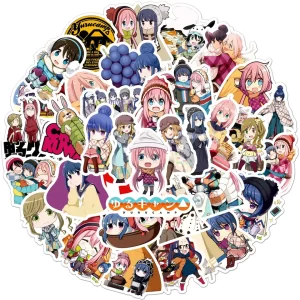Majora’s Mask vs. Twilight Princess
As the 20th anniversary of Majora’s Mask hits, it’s nice to look back at the Zelda series and see how the game’s popularity has stayed strong throughout the years. Popular for its dark storyline, something that hadn’t been done in the series yet, Majora’s Mask continues to have a cult-like following of fans who praise it as the best in the series. It’s fitting that for it’s anniversary, Majora’s Mask could be compared to another powerhouse in the series: Twilight Princess.
Both games have had long lasting popularity, but why exactly? Let’s look at some of the topics and themes that make these games unique, how they are similar to each other, and why they continue to be adored by new and old fans.
You can also check out our deep dive into the creation of Majora’s Masks most iconic design features here. Let’s celebrate some Zelda, hope you enjoy!
Eiji Aonuma stated, on the initial creation of Majora’s Mask. “We were faced with the very difficult question of just what kind of game could follow Ocarina of Time and its worldwide sales of 7 million units”. Under instruction of Shigeru Miyamoto, Aonuma and the development team had to get creative with how to approach Ocarina of Time’s successor. Miyamoto wanted the team to reuse the mechanics and design of OoT that had taken so long to create. Whilst also pushing out the next Zelda game in the shortest amount of time possible. The team came up with Majora’s Mask’s three-day system as a solution on how to minimize the game’s data while also giving enough gameplay to players.
Despite working with recycled parts, Majora’s Mask was a huge hit after its release in 2000 (N64) and 2003 (Gamecube). While not overtaking Ocarina of Time’s 7 million units sold, Majora’s Mask sold about 3.36 million copies. It currently has a score of 95 on Metacritic, and the remake has an 89.
Twilight Princess
Originally, Twilight Princess was supposed to be an entirely different game. Coming after Wind Waker in 2002, Nintendo wanted to make a sequel. Although the game had great sales in Japan, Wind Waker’s sales in America were lacking. Wanting to make something to please both audiences, the sequel was scrapped. As it was thought the cartoonish graphics style turned American audiences off from the game. Aonuma suggested making a more realistic looking Zelda game. Thus, the team working on Wind Waker 2 took a 180 and started production on Twilight Princess.
Luckily, Twilight Princess was a huge success. The game stood as the highest selling Zelda game of all time until the release of Breath of The Wild in 2017. Currently, the Gamecube version of Twilight Princess sits at an 98 on Metacritic. With the Wii version at a 95, and Wii U version at an 89.
Art Style – Majora’s Mask or Twilight Princess
Majora’s Mask
The promotional art for Majora’s Mask was wildly different from the previous Ocarina of Time. With intense shadows and a focus on dark, purple tones. It was clear the game meant to separate itself from the more colorful, childlike counterpart. The art foreshadows and compliments Majora’s Mask’s dark natured storyline. Within the game itself, the developers attempted to bring forward these darker hues despite the models and textures being reused from Ocarina of Time. In the Majora’s Mask remake, creators were better able to give the game a color palette that fits the ominous tone originally envisioned.
New artwork was also done for the Majora’s Mask 3DS remake. While keeping with the purple color themes, the new promotional artwork is much more cartoonish. Softening the harsh lines that the older artwork highlighted. The new Majora’s Mask art trades in the intense black shadows for bold, vibrant colors. While pleasing to look at, it doesn’t fit Majora’s Mask the same way that the original designs did.
New or old, the game’s character and item design is incredibly original. For a series that has a consistent cast of characters and places. Finding ways to make them memorable or include new and exclusive ideas from game to game is important. This is also something that Majora’s Mask excels at. The most iconic design from the game, the Majora’s Mask itself, is probably one of the best representations of this for the entire series. Not only is it one of the main plot focuses, but serves Majora’s Mask as an iconic mascot for players to easily recognize. It is an item that is mostly unusable for another Zelda game, unlike items like the Master Sword or Ocarina.
Twilight Princess
Twilight Princess is another game in the series that excels at making itself stand out. Twilight Princess’s promotional artwork turns from the very animated and cartoon towards a more fluid painted style.The game’s design represents a more mature and realistic art style. With a focus on diluted natural tones combined with intense yellow highlights. This doesn’t have to do with a “mature” plotline, but to parallel an older Link and main cast of characters. Much like the style of Majora’s Mask, Twilight Princess’ design is easily recognizable. This carries over to the in-game graphics as well. One of the most memorable design choices is the very ornamental design associated with the “Twili” characters in the game. Midna, Zant, the Shadow Beasts, and the Twilight Realm all have this design.
Unlike Majora’s Mask, Twilight Princess’s HD remake for the Wii U didn’t go through any sort of changes other than cleaned up graphics. Of course, the HD remake was only a few years later rather than Majora’s Masks 15 year gap.
Story and World
Majora’s Mask
Majora’s Mask’s dark storyline clearly sets it apart from other Zelda games, and gave it a unique popularity from those who adore it. Both Majora’s Mask and Twilight Princess have pushed the boundaries of Zelda tradition and have been rewarded with massive popularity for it. The stories have a lot in common. Possibly, some of the themes in Twilight Princess were enjoyed because of Majora’s Mask. Let’s look at some similarities the games share and how they use these topics to their advantage.
Both of the games deal with the idea of transformation as a game mechanic and plot point. Players enjoyed collecting all the masks in Majora’s Mask, and having some be used to complete puzzles gave devs a lot of creativity. Link’s transformation even got different reactions from NPCs, like Deku Link being stopped from leaving Clock Town because he looks like a child. Details like this go a long way for making the game memorable, as players have to memorize which masks do what and where. Within the game, each mask that Link can transform with is based off of a character who has passed away in the world.
Twilight Princess
Twilight Princess also has a unique transformation function. At first, Link is forcibly transformed into a wolf when entering any Twilight Realm. Eventually he is able to transform at will. Link’s wolf form is able to dig for items and to find hidden routes. He can also follow scent trails. While Majora’s Masks’ transformations are about versatility, Twilight Princess’s wolf mechanic is restricting. Link no longer has access to his weapons and items, and for most of the game both he and Midna are frustrated by his forced transformation.
The games Twilight Realm greatly parallels with Termina within Majora’s Mask. Both represent a sort of dark, limbo like realm that is separate from the main Hyrule. In Majora’s Mask, Termina ceases to exist after Link defeats the Skull Kid. Although there are many theories to what and where Termina actually exists. Both the repeating 3 day cycle and destruction after Link leaves hints that Termina exists within a different realm of time.
The Twilight is very similar, even being called a sort of “void” in the game. Places in Hyrule taken over by the Twilight almost pause time. Even normal inhabitants don’t even realize what has occurred as they are turned into spirits. They will stay like this until Link comes to purge the Twilight from the place, and then the people go back to their daily life.
Although the Twilight doesn’t have nearly as dark an interpretation as Termina’s existence. Both give their games an ominous feel as Link must traverse through them. Much like Termina’s destruction, Link seals off the Twilight Realm by breaking the mirror that connects them at the end of the game.
NPCs
Majora’s Mask
Both Majora’s Mask and Twilight Princess give players a unique Zelda experience by having a new villain be the focus of the story. Majora’s Mask takes a recurring common monster, a Skull Kid, and turns him into a feared villain. By stealing the Majora’s Mask from the mysterous Mask collector, Skull Kid gains magic powers. He then attempts to destroy Termina by crashing the moon into the world. Although the real villain is the Majora’s Mask itself, the Skull Kid is the one that Link spends most of the game chasing after.
Twilight Princess
Twilight Princess is very similar, but brings a never before seen character to the series. Zant, a Twili, spreads the Twilight across Hyrule in order to control both the Twilight Realm and human realm. It isn’t until far later in the game that Zant is revealed to be one of Ganon’s minions. Once again, Zant serves as the main villain that Link must chase down, despite a larger villainous force being acted upon him. Although Ganon, the staple villain for the Zelda series, appears in Twilight Princess, it is Zant that players spend most time learning about and attempting to stop.
Majora’s Mask’s lack of a certain reoccurring character also makes it stand out. Navi, Link’s fairy guide through most of the Zelda series, is shown to be missing at the beginning of the game. As Link searches for her, he is pulled into the land of Termina by the Skull Kid. For most of the game, Link has a new fairy guide, Tatl, who does not speak like Navi did. Instead, Tatl most communicates to Link via chimes when helping him interact with the environment. Perhaps this is because many players found Navi’s constant speech interactions obnoxious, so they attempted to give players a guide that was a bit more passive.
In TP, Link’s guide is nothing like previous fairy guides. He is accompanied by Midna, a Twili person who was transformed into an impish form by Zant. Midna has a strong personality, often giving Link sarcastic and witty remarks. At first, she only uses Link to help herself return to her normal form, but slowly begins to care about Link and the Hyrulian race as the game goes on. Her dynamic character makes her one of the most popular guides in the series.
Majora’s Mask vs. Twilight Princess – What Do You Think?
So there you have it! A comprehensive breakdown of what makes both Majora’s Mask and Twilight Princess so great. Both of these games share so much, and are so loved. We couldn’t just focus on one on Majora’s birthday. Please let us know about all your own opinions and love for Zelda anywhere you can find us!




